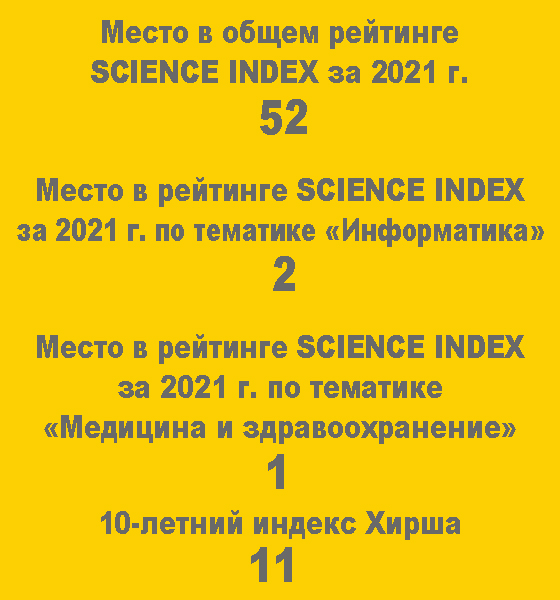Automation of COVID-19 detection in pregnant womens DOI: 10.29188/2542-2413-2020-6-4-3-7
- Ankudinov N.O. – оbstetrician-gynecologist, head of the reception department of the regional perinatal center of the State Autonomous Healthcare Institution of Sverdlovsk region «Regional children's clinical hospital», head of the obstetric remote consultation center of Sverdlovsk region; Yekaterinburg, Russia; https://orcid.org/0000-0002-9935-4372
- Zilber N.A. – Head of the Department of organization of medical care for mothers and children of the Ministry of health of the Sverdlovsk region; Yeka- terinburg, Russia; https://orcid.org/0000-0002-3667-6227
- Sitnikov A.F. – director LLC, PET-Technology LLC, Center of Nuclear Medicine in Yekaterinburg; Yekaterinburg, Russia
 1722
1722 Introduction. In the article we discuss the use of information technology in obstetric care during the COVID-19 pandemic. The aim was reached by continuous monitoring of all cases of upper respiratory infection in pregnant women, women in labor and postpartum women in each specific medical organization and in the whole Sverdlovsk region with subsequent information digiti- zation and automated analysis of different COVID – 19 forms: suspicious, probable and confirmed.
Materials and methods. «Regional obstetric monitoring (AIST «ROM») digital system was used for automated COVID-19 diagnosis in pregnant women, women in labor and postpartum women, as well as for detection of suspicious cases. AIST «RAM» allows to analyze patient’s epidemiological data and objective indicators of their physical status and automatically generate signal information.
Results. The automatic analysis of the data on the COVID-19 situation in the region is implemented. A register of pregnant patients with COVID-19 is being formed, taking into account the severity of the disease and gestation time. A situational awareness is main- tained using the algorithms of AIST «ROM»: each participant of the process receives information about patient’s condition and his passage through the routing stages.
Conclusions. A database, containing information about pregnant and postpartum women, who have COVID-19, is created. This data could be used in further large-scale studies.
| Attachment | Size |
|---|---|
| Download | 1.36 MB |

















































